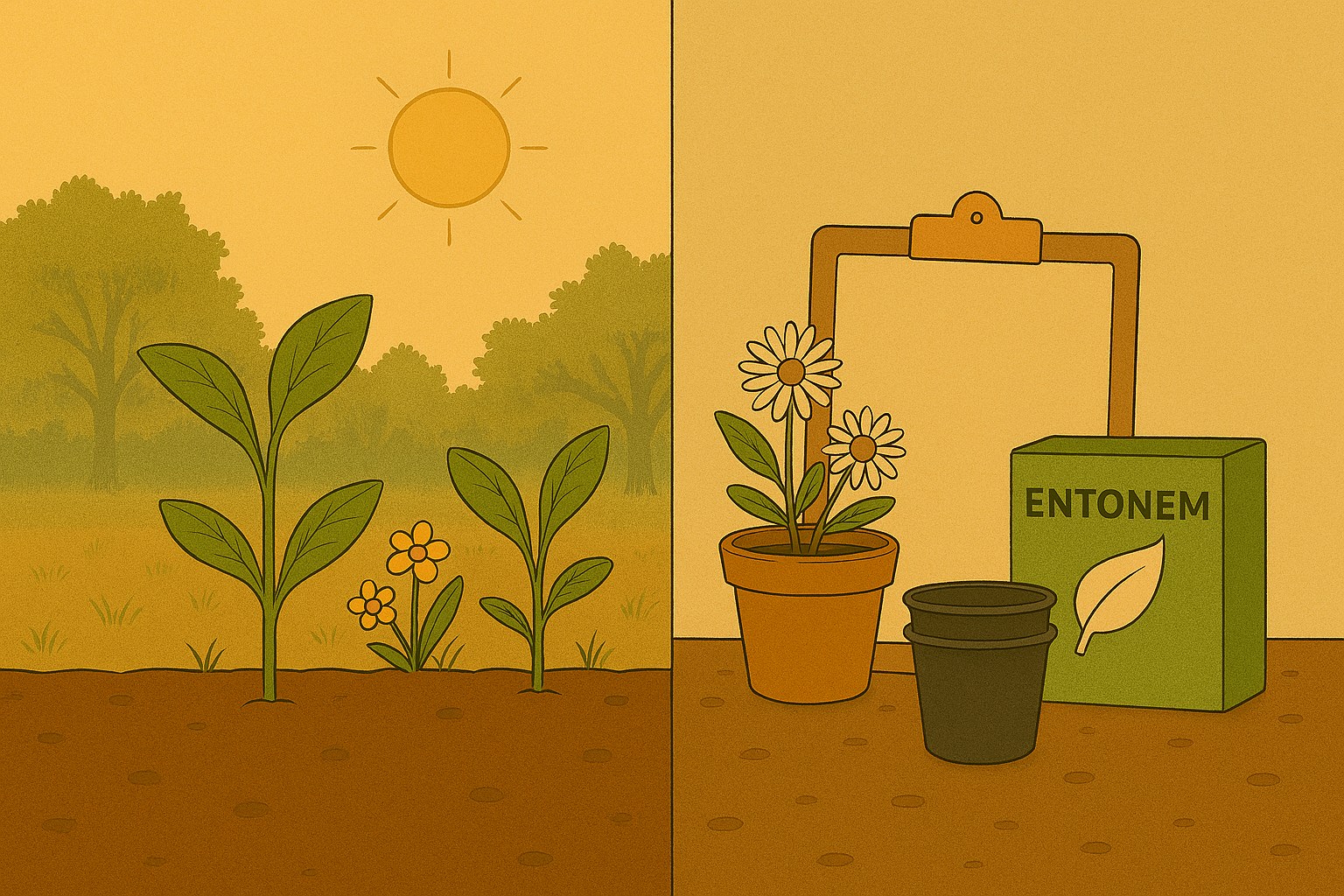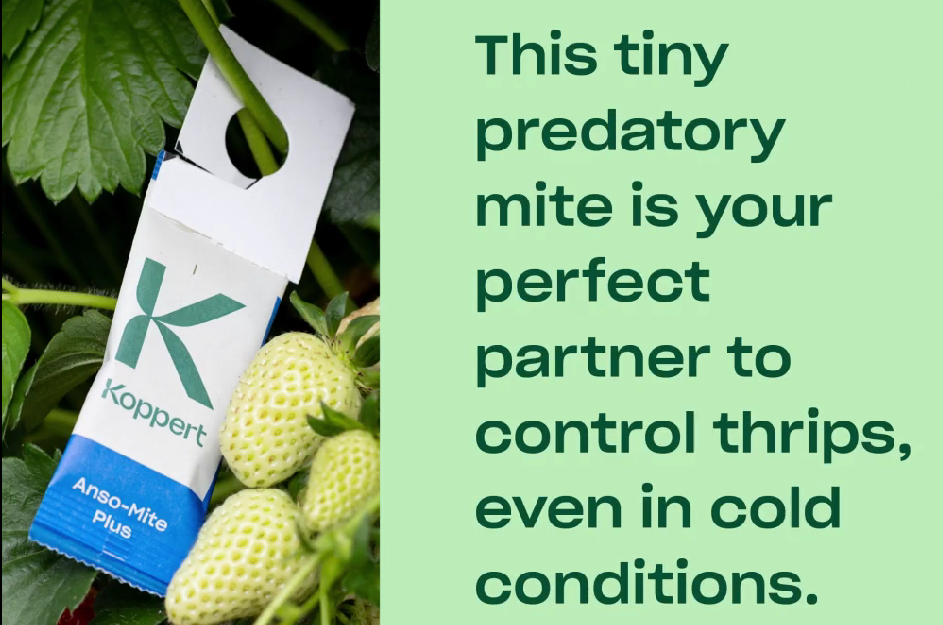Understanding Overwintering Mites, Insects and Control Options
Oct 08, 2025
Winter doesn’t wipe the slate clean. Pests don’t just vanish when temperatures drop—they shift into survival mode. This guide explains why overwintering happens, how common pests survive cold weather, and which biological tools stay active when temperatures fall.
Looking for a printable clean-up plan?
Grab our companion resource: Fall & Winter IPM Checklist
Looking for quick answers to specific overwintering problems? Check out our other article: Quick Guide: Overwintering Insects & Mites - Natural Enemies
Do Pests Survive Winter? (And Why It Matters for Growers)
Overwintering is a survival strategy. Thrips, spider mites and other problems pause development or hide in protected spots—through diapause, pupation in soil, eggs on woody tissue, or slow reproduction in greenhouses. These hidden stages emerge early and amplify spring populations.
Why it matters:
- Lower early-season problems = fewer reactive measures
- Healthier roots supported by microbial balance
- Biologicals work better when carryover populations are reduced

How Do Fungus Gnats, Thrips, and Other Pests Overwinter?
Understanding pest survival strategies helps you target the right stages at the right time. Microclimate always wins—media temperature, humidity, insulation, and residual hosts determine survival.
Fungus Gnats in Winter
Larvae often persist in moist media, propagation zones, and root balls. Outdoors, most fungus gnats are killed by freezing temperatures unless they are insulated by mulch or the mass of a container.
Looking for more information on Fungus Gnats? Check out our Deep Dive here.
Thrips in Winter (Including Thrips parvispinus)
Soil-pupating species such as T. parvispinus and F. occidentalis develop in media and can persist under canopy cover. Non-soil-pupating species like Echinothrips americanus complete their life cycle on foliage and require canopy-level control. Freezing temperatures are generally lethal, but pupae may survive in protected debris.
Finding thrips on plants in warm weather? Check out our year-round guide to Solving Thrips.
Spider Mites in Winter
Diapausing females may survive in crown tissue, bark, or mulch. Hard freezes kill most, but low-level activity can persist in protected areas.
Finding spider mites on leaves in warm weather? Check out our year-round guide to Solving Spider Mites.
Whiteflies in Winter
Nymphs and adults overwinter in greenhouses and other protected bays. They cannot survive hard frost outdoors.
Aphids in Winter
Eggs overwinter on woody tissue, while colonies persist indoors at a slow pace. Freezing temperatures kill active colonies but not the eggs.
Finding Aphids on plant stems in warm weather? Learn more about common species & how to control aphids year-round:
What Are Aphids? Identification, Life Cycle & Natural Control
Aphid Solutions - The Aphid Lion
Leafminers in Winter
Pupae persist in debris and media under cover. Freezing reduces populations, but protected pupae may survive.
Mealybugs & Scales in Winter
Mealybugs & their hard-shelled counterpart overwinter easily in crown tissue, bark, and plant crevices. They are cold-sensitive outdoors, and hard freezes kill exposed individuals.
Finding Mealybugs on plants in warm weather? Learn more about mealybugs & how to control them year-round:
What are Mealybugs?
Aphid Solutions - The Aphid Lion
Japanese Beetle Grubs & Root Weevils in Winter (Including Black Vine Weevil)
Burrow deep below frost lines, where surface freezing cannot reach. Larvae remain in the soil near plant crowns through winter and resume feeding in spring. For Japanese beetle grubs, treatments applied after the last frost can sometimes be more effective, as additional grubs may be laid in the soil once temperatures rise.
Best Biological Controls for Overwintering Pests
These biological tools are effective against overwintering pests and remain active in cooler conditions. Use them proactively in fall and early winter to reduce survival and spring pressure.
Soil-Level Allies
Entonem (OMRI) – Steinernema feltiae nematodes for fungus gnat larvae, thrips pupae. Active in cool media (~10 °C / 50 °F and above).
Capsanem (OMRI) – Heterorhabditis bacteriophora nematodes for beetle grubs and root-zone pests. Apply after last frost as soils warm.
Entomite‑M (Stratiolaelaps scimitus) – Soil predator for fungus gnats and shore flies in moist substrates.
Microbial Support
Trianum‑P – Supports root health and suppresses soil pathogens like Pythium and Fusarium.
Microflora SA – Stabilizes microbial communities in media, especially after chemical inputs or heavy irrigation.
Canopy-Level Predators
Limonica (Amblydromalus limonicus) – Cold-tolerant predatory mites for thrips and whiteflies.
Anso‑Mite / Anso‑Mite Plus (Amblyseius andersoni) – Cold-tolerant predatory mites for thrips, spider mites, broad mites, russet mites.
Thripex (Neoseiulus cucumeris) – Thrips control in cold-weather, good in fluctuating climates.
Cold-Tolerant Parasitoids
Aphipar-M (Aphidius matricariae) – Most cold-tolerant aphid parasitoid in our lineup.
En-Strip (Encarsia formosa) – Effective for whitefly control in cooler greenhouse conditions.

Monitoring Tools
Horiver Sticky Traps – Yellow – Track adult fungus gnats, thrips, and flying pests.
Overwintering Risks in Greenhouses, Unheated Structures, and Outdoor Beds
Heated Greenhouses
Crops continue growing through winter, and pests such as fungus gnats, thrips, aphids, and whiteflies remain active. Bright days and fluctuating humidity can trigger outbreaks even when growth slows. Use cold-tolerant biologicals to maintain control when warm-season species reduce activity.
Minimally Heated or Unheated Structures
These spaces often serve as holding zones for dormant stock or empty benches rather than active production. The main risk comes from hidden life stages in soil, debris, and root balls that survive in microclimates. Sanitation and substrate care are critical; apply drenches like Entonem before deep cold sets in.
Outdoor Beds & Containers
Freezing reduces pest populations, but insulation from mulch, snow, and container mass allows some pests to survive. Grubs burrow below frost lines, aphid eggs cling to woody tissue, and pupae persist in debris. Fall cleanup reduces refuges, and spring timing for soil-applied biologicals is critical.
Want the Checklist? Download It Here
For a printable action/prevention plan download our checklist here: Fall & Winter IPM Checklist
Looking for quick answers to specific overwintering problems? Check out our quick article with actionable insights: Quick Guide: Overwintering Insects & Mites - Natural Enemies
Key Takeaways: How to Reduce Pressure Before Spring
Cold slows pests, but microclimates always win. Sanitation and moisture management are your first line of defense. Pair cultural practices with cold-active biologicals—such as predatory mites for spider mites, and nematodes for grubs—for the best results. Plan now to avoid early-season outbreaks that can overwhelm your program.
Additional Resources on overwintering & seasonal concerns for growers:
Overwintering pests: diapause or hibernation and the wait for spring | Koppert Global
Protect your crop when temperatures drop: The benefits of early crop protection | Koppert Global


